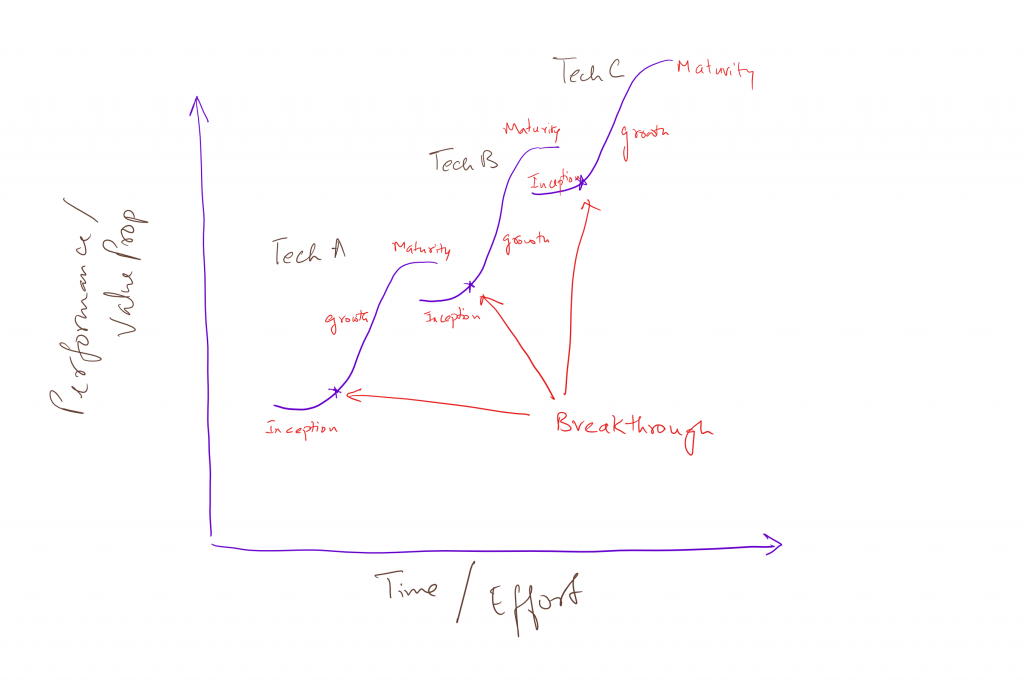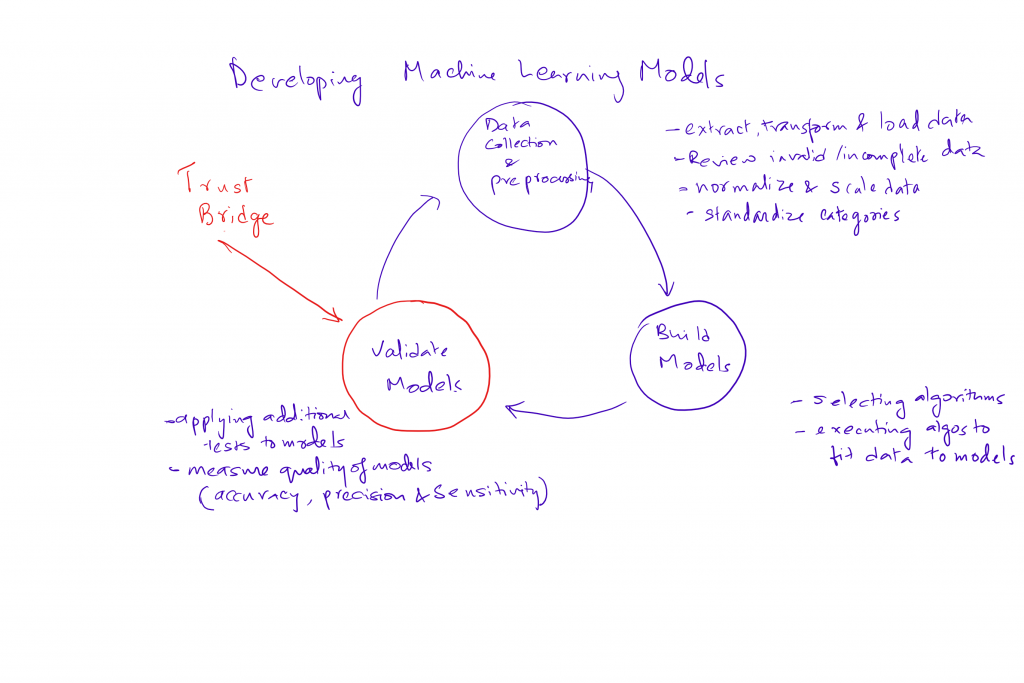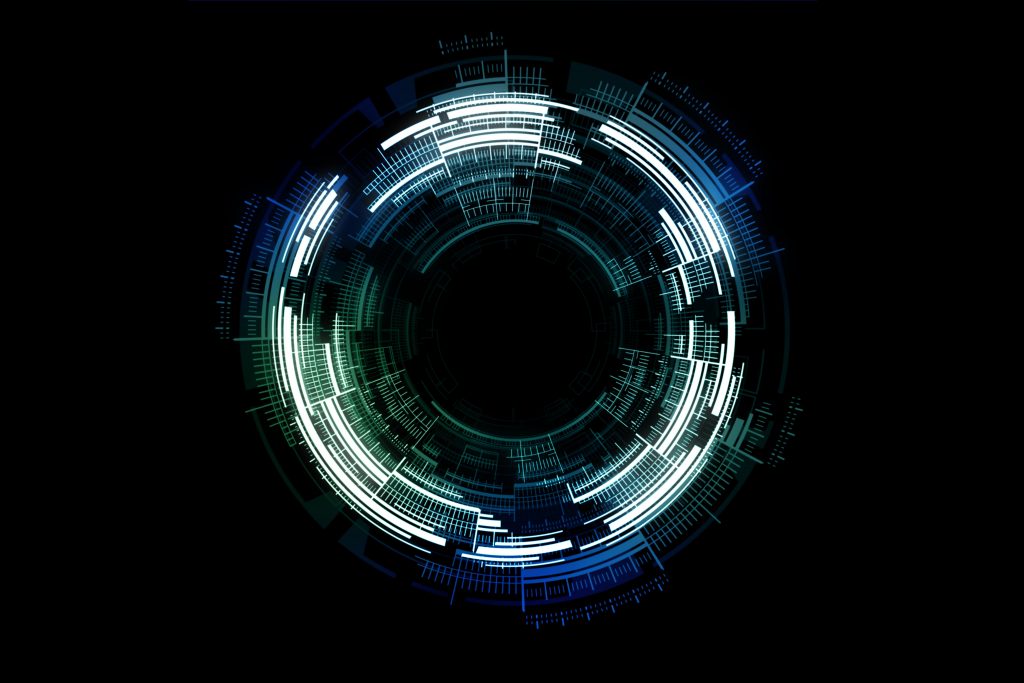A technology inflection point is where users move from an existing technology to a new technology. It takes a leap of faith for early adopters to make this transition and as the number of users adopting this new technology increases, there is a tipping point at which the new technology completely overwhelms the old one. A trust bridge is a mechanism that makes it easier for early users to adopt new technology. Understanding the underpinnings of a trust bridge will help you navigate an inflection point and drive adoption of the new technology.

The automobile moving from gasoline power to electric power is an example of one such transition (Case A on the framework mindmap). We take it for granted that we will not run out of fuel and be stranded with gasoline based cars, because of the numerous gas stations all over; the same is not true for electric cars which have a limited range and electric charging stations are not as common as gas stations. But the availability of accurate maps with locations for these electric charging stations, the accurate determination of how much charge is left in the car and the confidence that we can make it to the next charging station before the battery runs out, helps us make this transition (this is the trust bridge).
Ownership of cars is also undergoing a major transition (Case B). Earlier it was necessary for a person to own a car to use it regularly. Now with the availability of ride hailing services, it isn’t necessary to own a car. I have seen this with my own aging parents. My father has reached a stage of life where his ability to drive a car has deteriorated; So the transition to a ride share platform was great – available when he needed it without the fixed costs of maintaining a car and a driver. The trust bridge for him was the ability to see in real time the cars available near him and the confidence that he would have a car when he needed one; and for me it was to see in real time where he was on his ride, since he lives half a world away.
Another trust boundary on our horizon is the transition to self driving cars (Case C). Imagine how difficult it is for a majority of people to let go of control while driving, to a machine that will have your life and safety in its power while driving you from point A to B. The trust bridge in this case will be objective data on how much better automomous interconnected machines are at avoiding accidents than humans and the tipping point will be when it will be difficult for the die hard drivers who have refused to adopt autonomous cars to get automobile insurance.
Think about our transition from records, to cassettes, to CDs and DVDs and finally to streaming content (Case D). The last transition was the most difficult because it has meant that we do not have physical possession of the copyright content that we bought – but rely on a belief (trust bridge) that we could stream it when ever we want from the cloud and we can trust an Apple iTunes Store or an Amazon store to remember that we have purchased it and can access it anytime. It also implies that we trust these cloud stores to be available when we need them.
Companies moving from owned and managed data centers to shared cloud providers (Case E) is another example. The advantage of using shared cloud providers is that we have the ability to elastically expand and contract capacity, without a huge capital investment and only pay for what we use; Secondly cloud adoption has allowed for rapid evolution in container based application deployment where we have become completely oblivious of underlying server architectures, operating systems and technology stacks using containers like Docker and container orchestration options like Kubernetes; Thirdly with the rapid evolution in managing large amounts of data, a number of ML and AI frameworks are available as plug and play options. In the owned datacenter paradigm, bringing in such frameworks would have resulted in a whole new integration and onboarding project. The trust bridge in this case has been the rapid strides in cloud security infrastructure and capabilities for public, private and hybrid cloud offerings and the assurance of network, container, process and data isolation between clients.
In the Healthcare domain, introducing new products/therapies is also an example of an inflection point (Case F). The trust challenge is knowing the benefits and risks of a new treatment or therapy in the long term. Governments put in regulations to slow down the approval and adoption of any new therapy or drug until they make it through Stage I – IV trials. Once the new therapy has cleared these hurdles, adoption is a lot easier because people have faith in the regulatory process (trust bridge) to ensure that the new product is safe and effective before entering the market.
Similar is the case for abstract machine learning models and autonomous systems (Case G on the map). Some of the esoteric ML models may not be well understood or tested for all permutations and combinations. This leap becomes even more difficult in my experience when we deal with self learning or autonomous machine learning systems. Rather than letting adoption be a leap of faith for your users, it is critical that we understand user psychology – their fears & beliefs and build the trust bridge to facilitate adoption. I suggest the following process for evolving ML models (the model validation step will be the trust bridge here):

I have used the following framework to build my case for change. My experience has been whenever my team has focused on building a trust bridge in technology inflection cases or projects with significant change, the results have been very positive. I would love to have feedback on what folks have found useful when driving change.
PostScript:
Given the momentous changes we as a society are staring at in the near future like climate change, evolution of AI and genetic engineering like CRISPR, we need to make taking these trust leaps easier to keep up with the rapid changes in our environment, ideas, processes, products and services. And this is where a Change Management Practice that focusses on understanding user psychology – beliefs, desires and fears and being able to build the “Trust Bridge” will be critically important.






